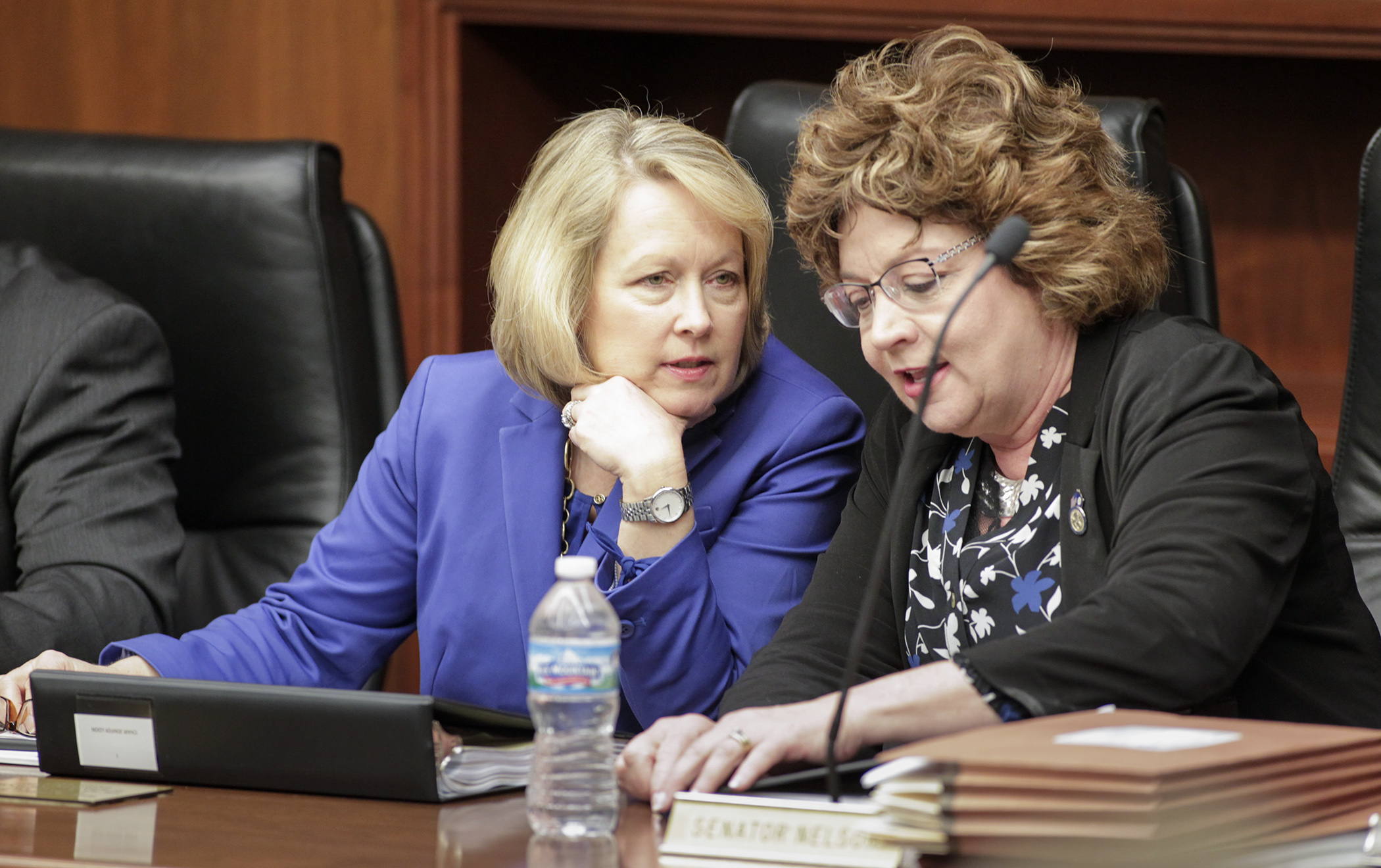Ed finance omnibus bill conference committee digs into details, seeks unified proposal

With the fate of voluntary pre-kindergarten programs across the state to be determined, a House-Senate conference committee met Wednesday to discuss details in proposed legislation that has split lawmakers down the aisle this session.
A conference committee meeting detailed the differences in the two omnibus education finance bills. Nonpartisan House and Senate staff reviewed the bills side-by-side for comparison.
The House passed HF890*/SF718, sponsored by Rep. Jenifer Loon (R-Eden Prairie), 75-56 March 31. The Senate amended and passed the bill 38-28 April 4. Sen. Carla Nelson (R-Rochester) is the Senate sponsor.
The House proposal would increase the General Education Basic Formula funding by 1.25 percent over the 2018-19 biennium, or $205.9 million in additional funding. The Senate would increase the formula by 1.5 percent, a $298.6 million increase.
WATCH Bill sponsors introduce House, Senate omnibus education finance legislation
“We have an opportunity to really invest in our kids and our shared future,” Education Commissioner Brenda Cassellius told the conferees.
But both bills contain numerous policy provisions, something that Gov. Mark Dayton has said he doesn’t want to be included in omnibus finance bills.
Both versions would allow school boards to adopt “E-learning days” in lieu of the long-held “snow day” during inclement weather. Districts could provide electronic instruction and count the day on its instructional hour calendar.
The proposals would each implement the teacher licensure overhaul originally proposed in HF140, dissolving the Board of Teaching into the Professional Educator Licensing and Standards Board, and create a four-tier licensure system.
Pushing policy
The defunding of voluntary pre-k is the most prominent policy provision to catch the ire of the governor. Currently, $25 million in base funding serves an estimated 3,300 4-year-olds at 74 school districts.
Dayton’s budget recommendation would increase biennial spending to $175 million, but under House and Senate bills, it would go unfunded — replaced instead by $48 million in school readiness adjustment credits and $24.6 million for early learning scholarships.
Another controversial provision would require a school board to negotiate an unrequested leave of absence plan with teacher representatives, and eliminate the use of seniority as a basis of proficiency. It would essentially abolish the so-called “last-in-first-out” policy governing teacher terminations.
Both bills offer several different policy provisions, albeit often uncontentious. The House version would:
- require school districts to accurately and efficiently test for the presence of lead in water;
- delink compensatory revenue from the General Education Basic Formula;
- create a new targeted compensatory revenue of $11 million for Fiscal Year 2018 and $12.3 million for Fiscal Year 2019 and thereafter for the purpose of closing the opportunity gap by increasing student proficiency rates;
- abolish the Perpich Center for Arts Education effective June 30, 2018, and convey the Crosswinds Arts and Science School for use as a metropolitan area integration school;
- establish a Lola and Rudy Perpich arts education and outreach division to provide arts support services to school districts throughout Minnesota;
- create a legislative study group on school finance;
- require that a school district performance report include calculated proficiency rates as required by the most recently reauthorized Elementary and Secondary Education Act;
- allow a student enrolled in a post-secondary enrollment option to remain at a school site during a school day;
- include child sexual abuse prevention instruction in health curriculum (known as Erin’s Law);
- require a school district to have an individualized education program for each child with a disability at the beginning of each school year; and
- include government and citizenship instruction in compulsory curriculum.
The Senate version would:
- require a school district to maintain monthly utility consumption data;
- establish the Educational Stability for Students in Foster Care pilot program;
- require a district to annually notify the parent of a student who is not reading at their grade level regarding their proficiency and the services being provided; and
- establish the Innovation Zone program to improve student and school outcomes consistent with the World’s Best Workforce.
Public testimony is expected to be taken at a future hearing.
Related Articles
Search Session Daily
Advanced Search OptionsPriority Dailies
Ways and Means Committee OKs proposed $512 million supplemental budget on party-line vote
By Mike Cook Meeting more needs or fiscal irresponsibility is one way to sum up the differences among the two parties on a supplemental spending package a year after a $72 billion state budg...
Meeting more needs or fiscal irresponsibility is one way to sum up the differences among the two parties on a supplemental spending package a year after a $72 billion state budg...
Minnesota’s projected budget surplus balloons to $3.7 billion, but fiscal pressure still looms
By Rob Hubbard Just as Minnesota has experienced a warmer winter than usual, so has the state’s budget outlook warmed over the past few months.
On Thursday, Minnesota Management and Budget...
Just as Minnesota has experienced a warmer winter than usual, so has the state’s budget outlook warmed over the past few months.
On Thursday, Minnesota Management and Budget...